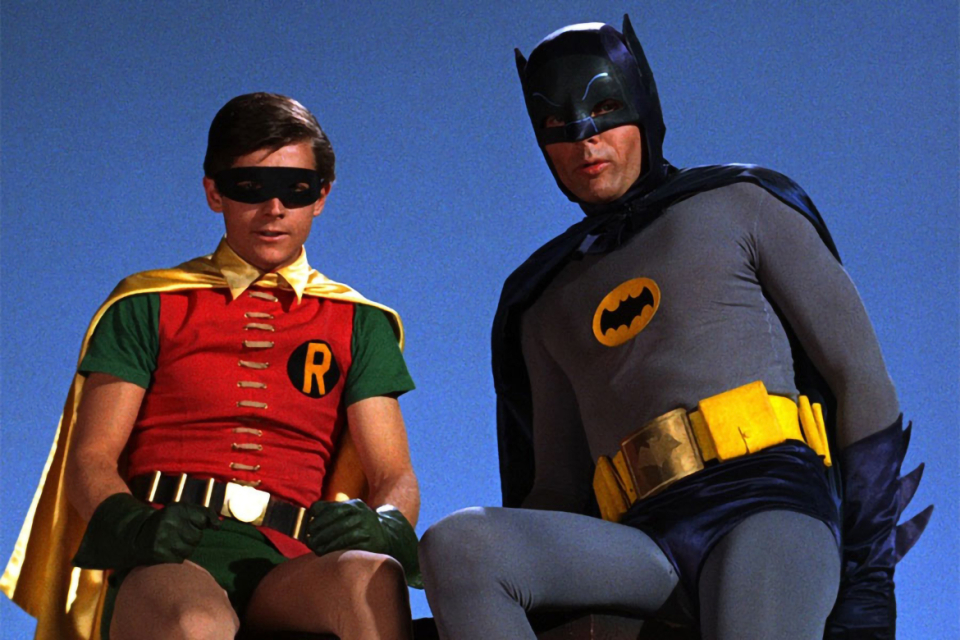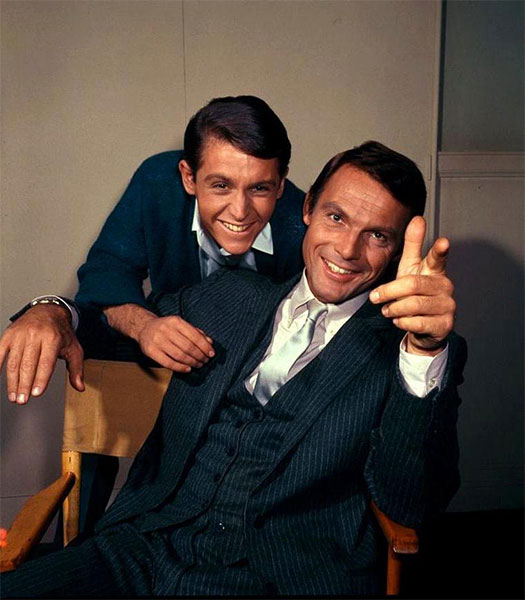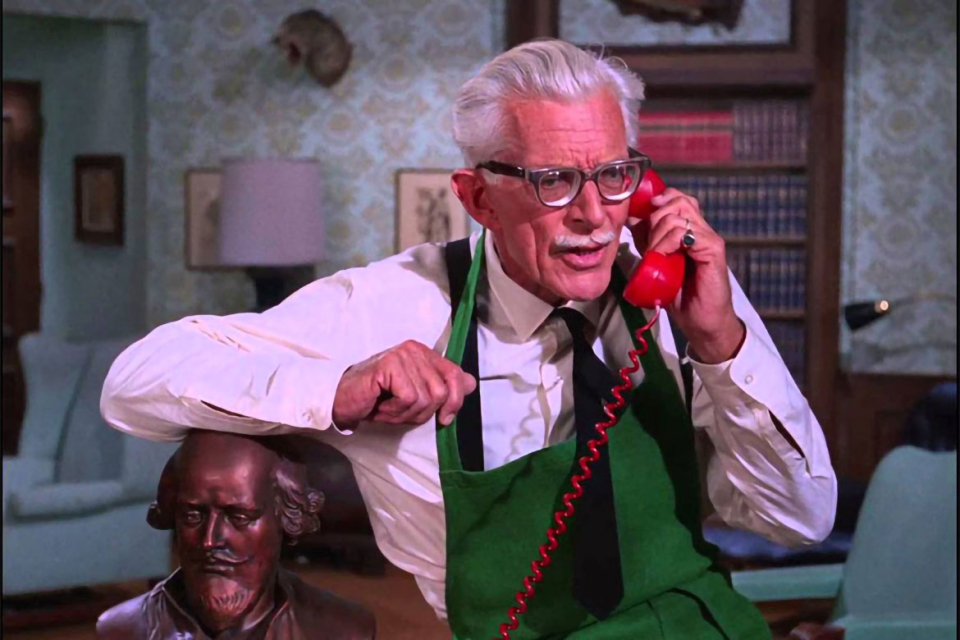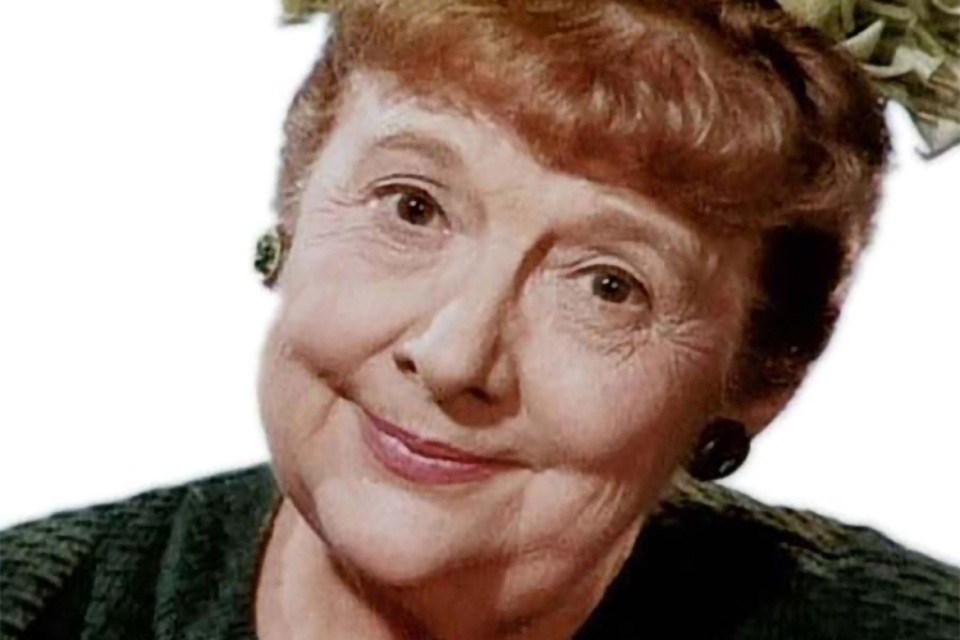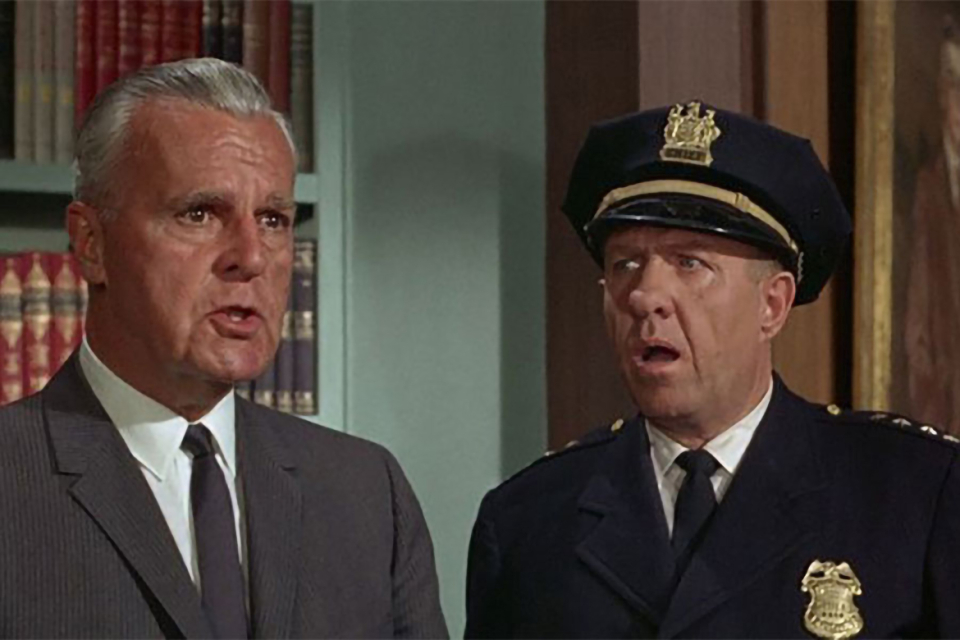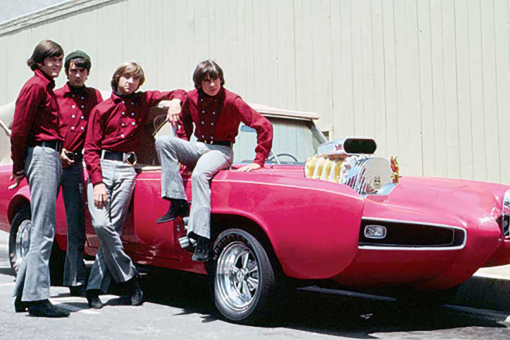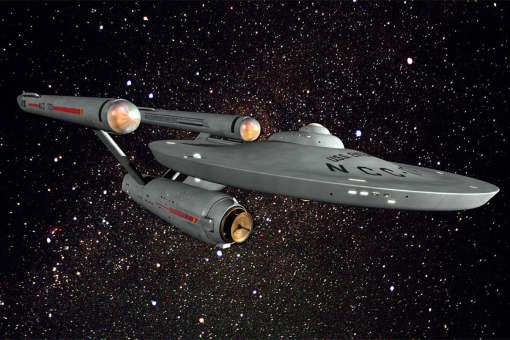The 1960s was littered with tension and turmoil, political assassinations and character assaults.
The Civil Rights Movement was in full swing, as was inordinate amounts of sex, drugs and rock and roll. The need for escape was rampant, and television provided the ideal platform.
A relatively fresh medium, TV offered a direct link to living rooms around the country, and became both the source and provision that transmitted and fueled entertainment and news.
By midpoint in the era, the “TV set” - the creation and the revelers - were primed for and pleasantly possessed by genies and witches, westerns and southern belles; fathers who knew best, and equally-all-knowing-mothers who did it all. There were “that girls” who became “it” girls, along with look-a-like-cousins, and “Gidgets” and gadgets galore.
Wise-cracking jalopies came to life, while also-talking horses galloped across the small screen threshold. Martians and “Munsters” of every shape, size and color gleefully invaded the airwaves providing in the process the much-needed magical solutions and comic relief to the time.
Consequently, the audience was driven to take the wheel, spinning and weaving a web of interconnecting low-definition dots which they wielded by way of their individual television dials.
By 1966, in particular, viewers became enamored with a beloved band of high-concept television shows pervading the airwaves, not the least of which was Batman, a twice-weekly half-hour series that dispatched its own sense of style, humor, and unique brand of happy heroes and delightful villains.
Originally screened on ABC from January 12, 1966 to March 14, 1968, Batman immediately began to “splat,” “clank,” “bam,” and “kapow” its way into the hearts of ardent viewers of all ages who reveled in its clever combination of camp and satire.
An innovative take on the comic book created by Bob Kane and Bill Finger, the show presented a cast that was nothing less than stellar, beginning with its leading “dynamic duo”: the charismatic Adam West as Batman (a.k.a. millionaire Bruce Wayne), and then-teen titan Burt Ward as his trusted sidekick Robin (a.k.a. Dick Grayson, the young vigorous ward to Wayne).
The show’s unique charm had simply chimed on the airwaves at just the right time. High-powered and rife with straight-faced comedic performances, witty scripts, pulsating theme music, ground-breaking direction (such as those “crooked” camera angles denoting the crook-of-the-week’s lair), Batman delivered a quality production across the board.
According to West, the series was a media mosaic threaded seamlessly together by its “brilliant” executive producer William Dozier (who died of a stroke at 83 in 1991).
“He had a great ability for bringing the best people together,” in front of and behind the scenes.
Dozier, then-Vice-President of Screen Gems (the TV-off-shoot of Columbia), had previously helped to develop hits like Hazel and Bewitched, and was more directly responsible for the TV adaptation of The Green Hornet, the acclaimed, if short-lived half-hour adventure series (starring Van Williams and future-martial-arts legend Bruce Lee) that had a similar if slightly more serious tone than Batman.
As West goes on to explain, “We were [also] fortunate to have writers like the fine Lorenzo Semple, Jr. and directors like Robert Butler, and, of course, guest stars of note like Julie Newmar, Milton Berle, Burgess Meredith, Cesar Romero and many other big names.”
“Big names” is an understatement.
A nefarious list of supporting characters (or “Special Guest Villains,” as they were so listed in the show’s cherished opening and closing animated credit sequences) were portrayed by some of Hollywood’s finest, all of whom clamored to make guest-appearances.
The rogues gallery included the aforementioned Romero (as Joker), Berle (as Louie the Lilac), and Meredith (as Penguin), as well as Frank Gorshin (Riddler), Ethel Merman (Lola Lasagne), David Wayne (Mad Hatter), Maurice Evans (Puzzler), Cliff Robertson (Shame) and then-wife Dina Merrill (Calamity Jan); even famed film director Otto Preminger donned a dastardly disguise on the show (as the mysterious Mr. Freeze, originally named “Mr. Zero”).
However, the most recognized of the appealing anti-heroes was the cunning feline female called Catwoman, a character first brought to grand eminence by the statuesque Newmar, formerly of My Living Doll (CBS, 1964-1965), and who later shared the lynx-like part with Lee Meriwether (for the 1966 feature film edition of the series), and finally, Eartha Kitt (cast in the show’s third and final year).
As documented in the book, Glamour, Gidgets and the Girl Next Door, Newmar once talked about what it was like to play Catwoman. She admitted to knowing very little about the series or the character and only accepted the part because her brother John, who was attending Harvard University, told her the series was a massive hit on the Ivy League campus.
Upon her arrival in the wardrobe department at 20th Century Fox, which produced the series, Newmar was presented with the glittery, skintight Cat-costume. “Some people think I created the costume,” she said. “That was not the case…although I did create it. I moved the belt from the waist to the hips because that worked better for my figure. It gave it a more sensual, feline look.”
Of her days as Catwoman, the elegant actress went on to conclude, “[It] was a fabulous time in my life.”
Rounding out the mainstay regular supporting cast was heralded 1920s/30s B-movie star Neil Hamilton as the deadpan Commissioner Gordon, Stafford Repp as the chipper Chief O’Hara, and Alan Napier as Alfred, the trusted butler to both Batman and Bruce - while dear, chatty Aunt Harriett was played by adored character actress Madge Blake (who died at 69 in 1969, only one year after Batman’s demise; and who was niece to actor Milburn Gunsmoke Stone).
A stand-out third-season performance was delivered by that of the late Yvonne Craig as Batgirl, otherwise known as the mild-mannered librarian Barbara Gordon (daughter to Hamilton’s Commissioner Gordon, who remained oblivious to her twin identity).
Created specifically because of the series, Batgirl went on to become one of the most popular characters in the entire Bat-franchise for years to come.
Craig (who succumbed to breast cancer at 78 in 2015) turned in many other memorable TV performances, including that of the green-colored Orion slave girl from Star Trek’s third season episode, “Whom Gods Destroy.”
But that character was alien by definition, and certainly foreign to Craig’s true-to-life personality. For as she once told CNN, her more down-to-earth Gordon and Bat portrayals were “very close to who I am,” and working on Batman “was a wonderful experience.”
As Burt Ward then too expressed, “Yvonne was a very, very sweet person who had a love of animals. She was a very spirited happy energetic person. When she entered the room, everything seemed to light up. It was a tragic loss.”
Fortunately, Ward, like Craig, had also reveled in his time on Batman. As he revealed, “I enjoyed working with everyone because remember, these were all real pros that had been around the business a long time.”
“Our A-list team made it work…and made our Batman a classic,” West maintains today, “because we were all married to the same kind of comedy and everyone just got it.”
Viewers at home felt similarly wedded to the show, which was hard not to like. A hit from the minute it debuted, Batman was additionally accented with skillfully-choreographed action-sequences, and even some dance numbers (as when Batman jigged to the “Batusi” in two episodes).
Other optical highlights included the elaborate wardrobe, make-up, stage (the Batcave, the Batpoles, Wayne Manor) and prop (the Bat-phone, the Bat-computer) designs; not to mention the spiffy Batmobile hot-rod fashioned by George Barris (who died in 2015 at age 89), and which became nearly as popular as the show’s human performers.
“The costuming and the sets were outstanding for that or any time, especially in television,” assesses West.
Into this mix, the show’s stories, dialogue and overall jocular verbiage, much of which translated on screen as cardboard cut-out visuals and catch-phrases, were noted and to this day still resonate with millions.
Ward’s Robin, for one, had a “Holy” list of excitable dire descriptions, while Newmar’s purring “Pppperrrrfffeccctttttt” still resonates with Bat-Cat fans. Additionally, Dozier, who served as the show’s narrator, provided a “dynamic dual” of a role of his own by citing immortal words like, “Same Bat-time! Same Bat-Channel!”
In 2003, West and Ward reunited for the CBS TV-movie, Return to the Batcave, which was based on West’s 1994 memoir, Back to the Batcave. The film was a light-hearted romp about the heralded days working on the cherished original TV edition, which always had the proverbial “it” factor – and still does.
Five decades after its debut, Batman remains a staple in the psyche of global pop-culture. The series has been recently adapted back in comic book form, and released as a handsomely-drafted DVD box set, while West and Ward are reuniting once more for an all-new animated movie based on their original performances.
So, there is little doubt that their uplifting and hopeful interpretations of Batman and Robin were the lock and key reasons why the show was and remains so popular.
West’s leading performance, in particular, brought sincere heroism to the screen, which many believe is missing from much of today’s superhero presentations on both the big screen and small (TV’s new sassy Supergirl and The Flash notwithstanding).
“Today's television is sometimes missing a certain cohesion of team play and concentration,” says West. “For some shows the overall tone and dynamics don't seem to be working. Quality is like taste. You either have it or you don't.”
Or as Burt Ward once noted, “No kids should see [the] kind of violence where Batman is killing as many people as the bad guys.”
“Our characters were antiseptic,” Ward says, “…and if you remember what we did on Batman, as the scripts were written very funny, we played them very straight.”
While the comedy flowed, the show’s action-sequences were played with equal verve of another kind. As Ward has also said, “When you are doing a show, it can get really dull. You are sitting so long while they set up the lights, then you say a couple of lines, then they tear down the lights again. At least stunts are something that uses your physical energy a great deal.”
Utilizing the trademark humor that he incorporated into playing his most famous role, West adds today, “Our over-the-top heroism was meant to be accepted and uplifting to the kids. At the same time, we were stretching with tongue-in-cheek to bring laughs for the adults.
"That made it more challenging and fun for me in working with the character. To be silly, somewhat insane, quite physical and seemingly heroic was not the easiest of roles. But the cape helped. Even the itchy tights.”
West clearly brought talent, sophistication, and humor to the role while Ward, only 19 when the series first began (and who in 1995 authored his own Bat book, Boy Wonder: My Life In Tights) presented the perfect balance of innocence and seriousness.
As a result, Batman went on to deliver a significant amount of joyful entertainment for what has now become five decades, cementing each actor’s place in TV history as an icon. West says, “The biggest reward continues to be the pleasure and fun our efforts bring to the folks out there, those ‘Bat-fans’ of all shapes and sizes. It is nice to know that our comedy has caused 50 years of laughs, conversation and inspiration.”
A few particularly poignant memories stand out from the countless interactions West has had with exhilarated enthusiasts who have expressed their sincere appreciation of his performance as Batman, and how much the show has meant to them.
“I get hundreds of sincere letters and stories directly from Bat-fans,” he declares. “It is touching and amazing to see the influence our work has had with folks of all walks and persuasions. Many people tell me how the show changed their lives for the better. That's always good to hear in a troubled world.
"When I see tears in the eyes of a grown man telling me he had no father, that my Batman became his father and that he's now a police chief, I can't help but feel a little moved. Or the lady who told me she grew up with me and became an IRS manager.”
“But that was a different kind of moment,” he muses. “I didn't especially want my performance known for that.”
Fortunately, significantly more encouraging memories were inspired and/or represented by Batman, the character, and Batman the series; the importance of honor, literacy, and sincere and mutual respect for all humanity, to name just a few.
For West, however, “Those messages of honesty, true friendship, education and loyalty were exaggerated and on a level where the kids watching couldn't escape them…nor could the adults when they were through laughing. They were just happy we got through to junior and they thanked us. Our message was clear. There aren't many shows that can be enjoyed with the whole family, and talked about and remembered. We have been fortunate.”
As have countless Bat-viewers everywhere.
For more on Burt Ward, click here.
For the Archive of American Television interview with Adam West, click here.
For The Archive of American Television interview with Batmobile designer George Barris, click here.
For more 50th Anniversary stories, click here.

